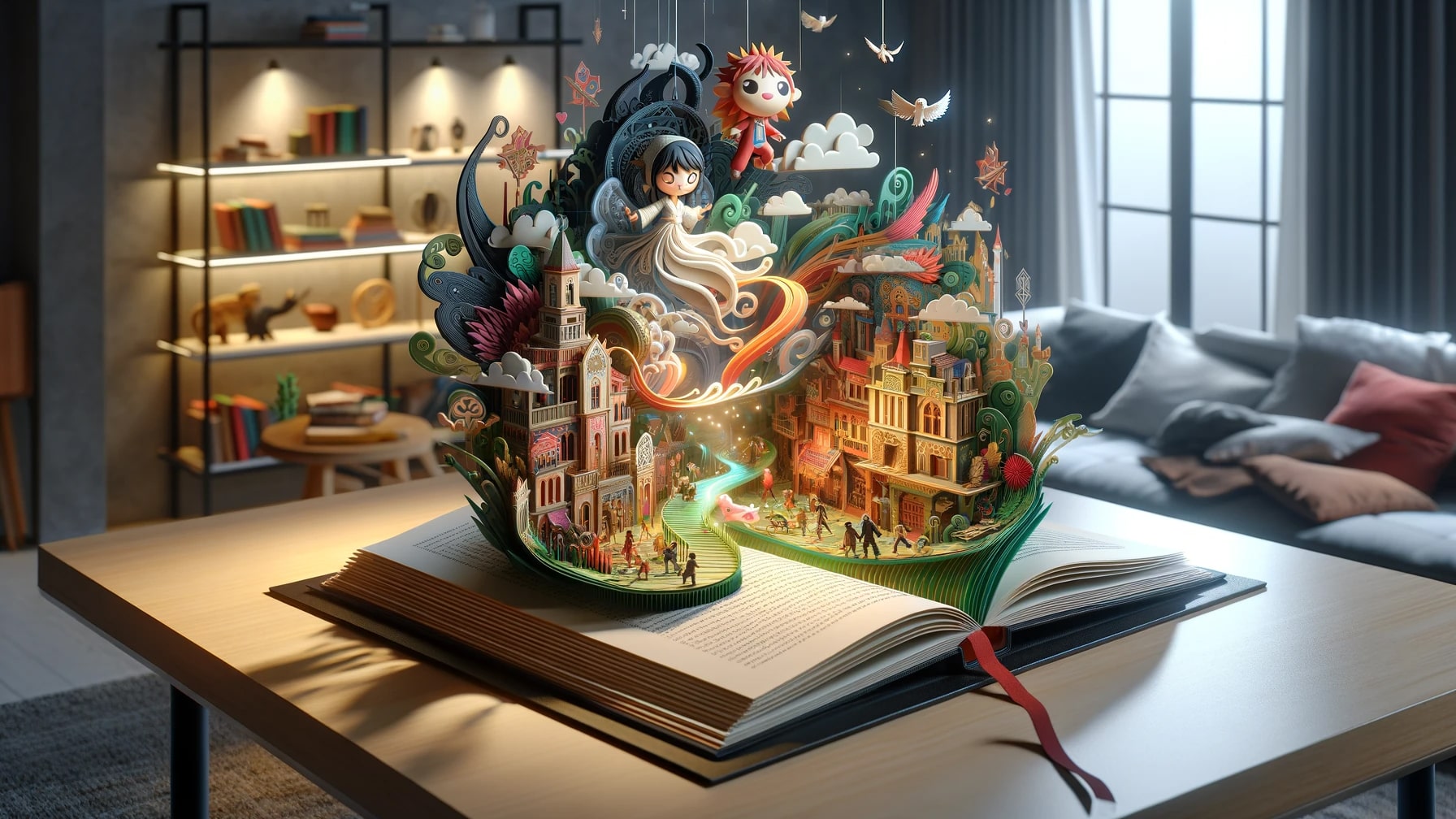
There’s power in a story, and it’s not just in the movies or books. You see it in the news, in sports, and even in education. It’s powerful because we’re hardwired to take inspiration and morals from any story. It convinces us to do things we didn’t consider before.
That’s why businesses choose to share their brand story through animation and brand mascots rather than using hard facts and stats. There are many ways to share your story, and one of the best is visual storytelling.
What Is Visual Storytelling?
When you use pictures, movies, and drawings to tell a story or get your point across, you’re using visual storytelling. Using pictures in stories helps people connect with the story and makes the information easier to understand and take in. Illustrations, movies, and even music are all elements of this story.
We rely on visual storytelling so much because it’s effective at engaging with us and simplifying complex ideas so that we can absorb and apply them. For generations, it has been an effective format for captivating and moving the audience.
But, what are the ingredients?
Elements of Visual Storytelling
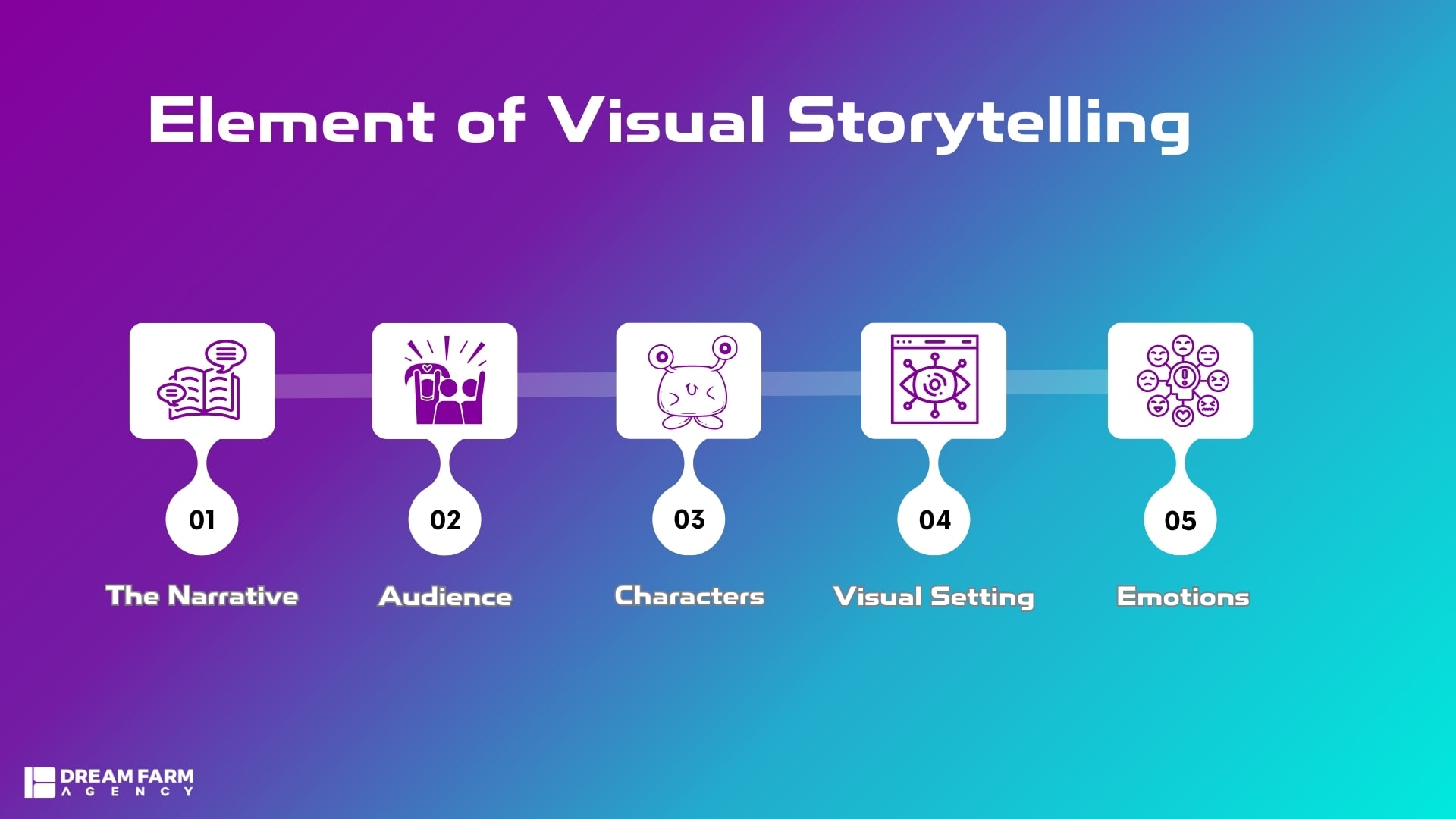
Just like movies and animations, several key ingredients blend the core message with captivating visuals to make a lasting impression on the audience. Here are the elements that go into your visual brand story:
The Narrative
The story you tell isn’t just a bunch of odd events; it’s a journey. Putting together a story for your brand is like giving your viewers a map. Every part of a journey is more interesting when it’s told in an intriguing story. It’s not just what you say, but also how your story makes people feel.
For example, if your brand is all about technology, the story could be about someone who faces problems and comes up with a revolutionary solution.
Audience
Knowing your audience is step one in creating compelling visual stories for your business. Think of your readers as the protagonists in your novel; their interests and values shape your storyline. When you really connect with your audience, you’re not just talking to them; you’re having a conversation that they want to join.
Consider this: if your company targets the tech-savvy millennial generation, it’s better to use vivid and modern images. If you know your audience, you’ll know what they respond to and integrate those elements in your visual storytelling process.
Characters
Characters are what make your brand’s story interesting. They’re more than just logos or images; they’re like close friends who help people remember your brand. A figure, like a brand mascot, a sign, or even a customer, makes your brand seem alive. They make buying a normal thing into an engaging and lasting experience.
Visual Setting
Picking the right place for your brand’s story to unfold is like picking the right stage. It’s more than just a setting; it gives your story its mood and feel. The right setting gives your pictures meaning, makes you feel something, and turns them into an experience. It’s the backdrop that makes your brand shine and leaves a lasting impression.
Emotions
Emotion is the glue that connects your brand story to the past and present of your target market, building a relationship that goes far beyond an ordinary transaction. Feelings like happiness, excitement, or even nostalgia can help you connect with someone on a deeper level. When visual storytelling makes people feel something like happiness, wonder, or intimacy, you’re not just showing off your brand; you’re taking them on an emotional journey.
Benefits of Visual Storytelling
You probably already know that a picture is worth a thousand words, which shows the power of visuals in communicating your brand message. But, you may still wonder if visual storytelling is the right format to go with. It is, and here’s why:
Visual Stories are Inherently More Engaging
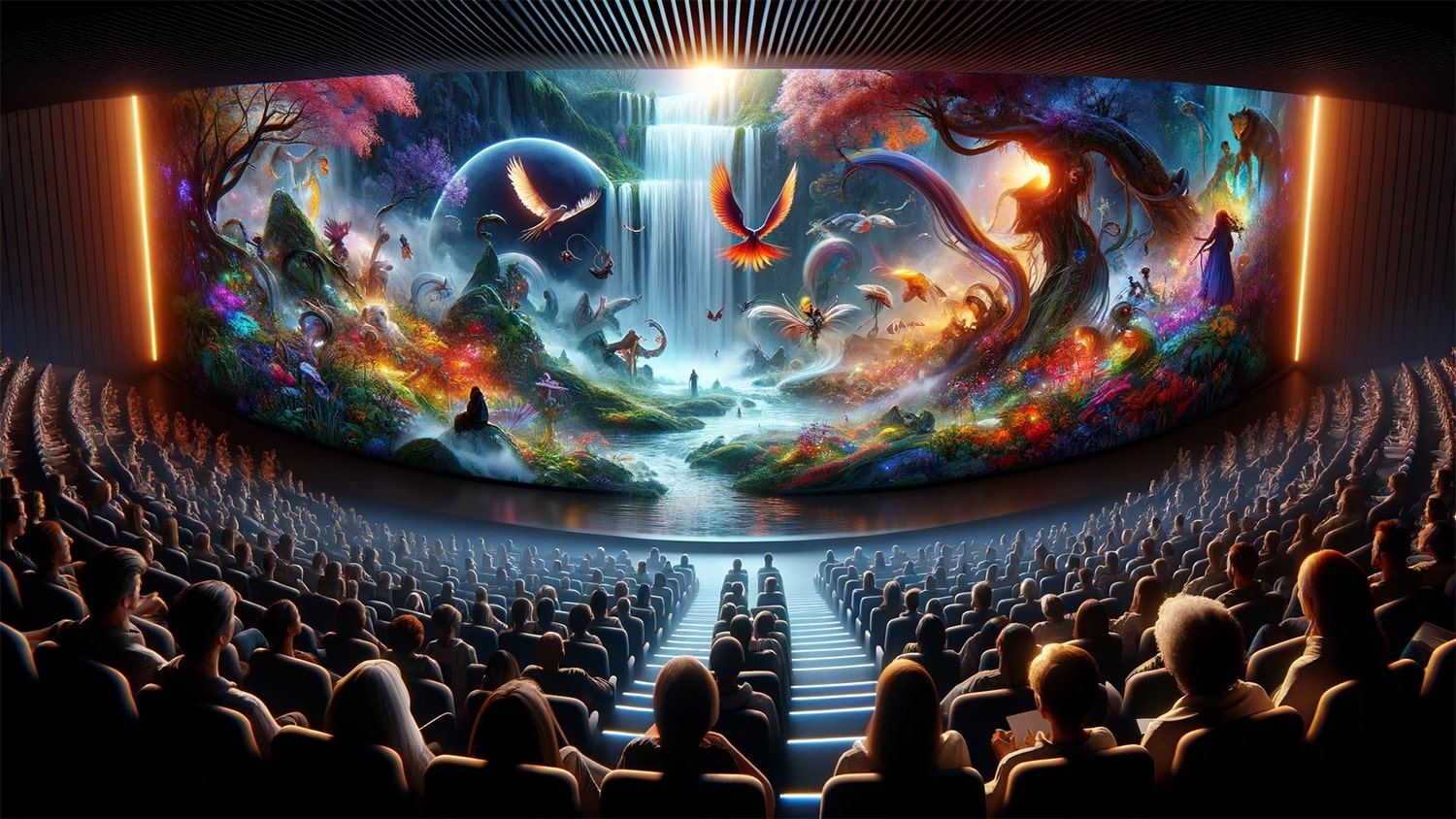
As human beings, we are hardwired to choose picture over text for education and entertainment. Besides making it easier to receive information, visuals can stir emotions within us that are not easy to replicate in a text.
If you doubt this, see how you feel when using Instagram versus a platform like X. It’s also why most people prefer to watch a movie rather than read a book about the same story. It’s just on a different level.
Visual Stories Make Things Simple & Memorable
Pictures have the power to break down complicated ideas and make them clearer. For instance, infographics are a great way to simplify overwhelming amounts of data and information. Visual stories also leave a long-lasting impression. Research has shown that people remember things better when they have access to them visually rather than just reading about them.
It’s the Perfect Social Media Play
We live in the world of 20-second videos and Instagram reels. Instagram has hundreds of millions of active users per day, and Snapchat has billions of daily views, so it’s obvious that people follow the picture. With the right visual storytelling strategy, you can easily cut through the noise and set yourself apart from the competition.
Companies and brands that use visual storytelling on social media sites like Instagram have a rare opportunity to attract and retain customers by providing an authentic, interesting, and appealing look into their world. Nothing can show your brand, its promise, values, social mission, and identity better than a well-crafted visual story.
But, how do you create such a story?
Tips for Visual Storytelling
So, visual storytelling works. But, that’s also why so many brands (including your competitors) use its power to pull customers in. So, how can you stand out? There are a few essential things to keep in mind.
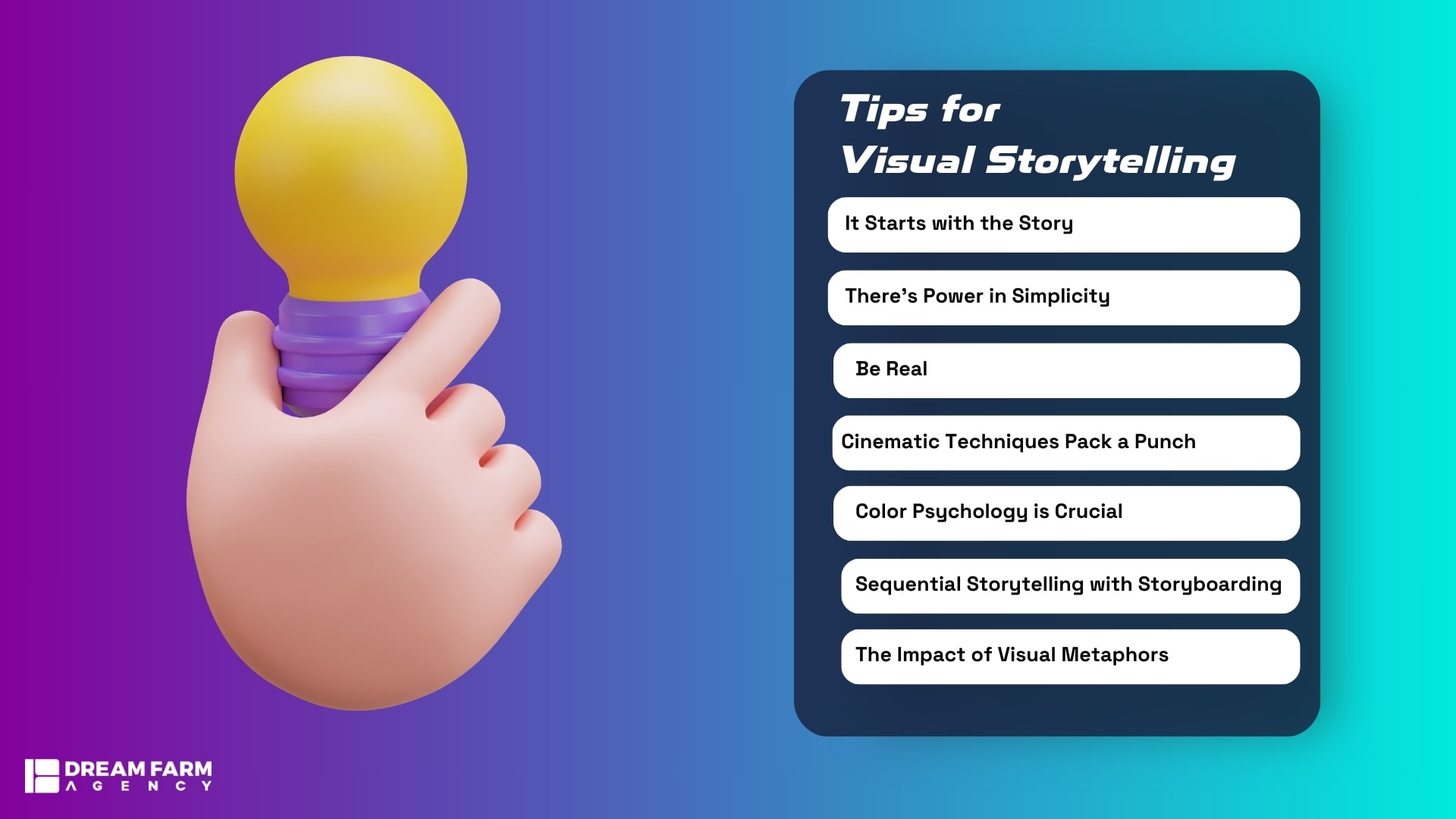
It Starts with the Story
It may seem like a no-brainer, yet many companies think that the story revolves around visual components, not the other way around. But, that’s not true. If the message (the values, challenges, and characters) in your story doesn’t resonate with the people, using elaborate visuals can backfire and make it seem like you’re just hopping on a trend.
Never lose sight of the fact that pictures should always complement narrative. If your message isn’t clear, no amount of eye-catching graphics will matter. Sometimes a great story with even the most basic graphics can go viral.
There’s Power in Simplicity
When it comes to visual storytelling, simplicity is key. Using simple, clear pictures will help people understand and remember your story. Consider the now-iconic Apple logo: a bite out of an apple. It’s simple, but it tells a story of originality and escape from the norm.
Be Real
No, we are not talking about the application! The essential ingredient that helps your visual story work is authenticity. Brands that feature ordinary people, real places, and real situations are more relatable. Take Dove’s Real Beauty campaign; by featuring diverse women, it not only celebrates authenticity but also connects with a broader audience.
Cinematic Techniques Pack a Punch
Bring your visual story to a higher level by using cinematic techniques. Camera angles, lighting, and framing are techniques to give drama and depth to a shot. Think of the unforgettable opening sequence of “The Lion King”—the sight of the first light above Pride Rock sets the stage for the entire drama with its striking effect.
Color Psychology is Crucial
Being proficient in color psychology can help you become a powerful storyteller. Colors with a warm undertone, like red or orange, may create an emotional response, while a cold undertone, like blue, can make people feel more relaxed. Look at Coca-Cola’s red, which not only signifies the brand but also triggers feelings of energy and joy.
Sequential Storytelling with Storyboarding
When you use storyboarding, you can lay out and visualize your story’s sequential flow. To keep the viewer engaged and on the edge of their seat, it is useful to divide your visual story into frames, whether you are doing an ad or a social media campaign. Pixar heavily uses storyboarding to craft its animated stories, offering a smooth visual journey.
The Impact of Visual Metaphors
By including visual metaphors in your visual storytelling process, you can communicate a richer symbolic meaning. The Nike swoosh is more than a logo; it represents growth, success, and victory. Adding such metaphors is key if you want your story to become memorable.
A New Era of Visual Storytelling

So, it’s undeniable that visual storytelling about your brand is far more effective than listing the features and technologies of your product. But, it doesn’t have to happen in 2D. Ask yourself, what if there was a way to transport the audience into your story where they just don’t watch it but also live it?
Well, actually, there is a way. With Augmented Reality (AR) and Virtual Reality (VR) hitting the headlines, people can simply put on a VR headset and see, hear, and touch everything in the world you created. When they step into this metaverse, they turn from viewers into actual characters in the story, bringing engagement and immersion to a whole new level.
This isn’t so into the future because it’s already happening, and many companies are using interactive media to tell their story.
In the End,
Brands can stand out from the crowd and make a lasting impression on their target audience by using visual storytelling. It’s powerful because it’s not limited to “promoting” the product. It’s a story about your whole brand, with its values, goals, and challenges.
People relate to the human side of your brand. When they do, they don’t shop to buy “stuff”; they buy an experience. From animation to immersive technologies, you can use many ways to tell your visual story. Whatever you decide, we at Dream Farm Agency can help you create a story that puts you on the map. You just have to get in touch and start.

Rojan
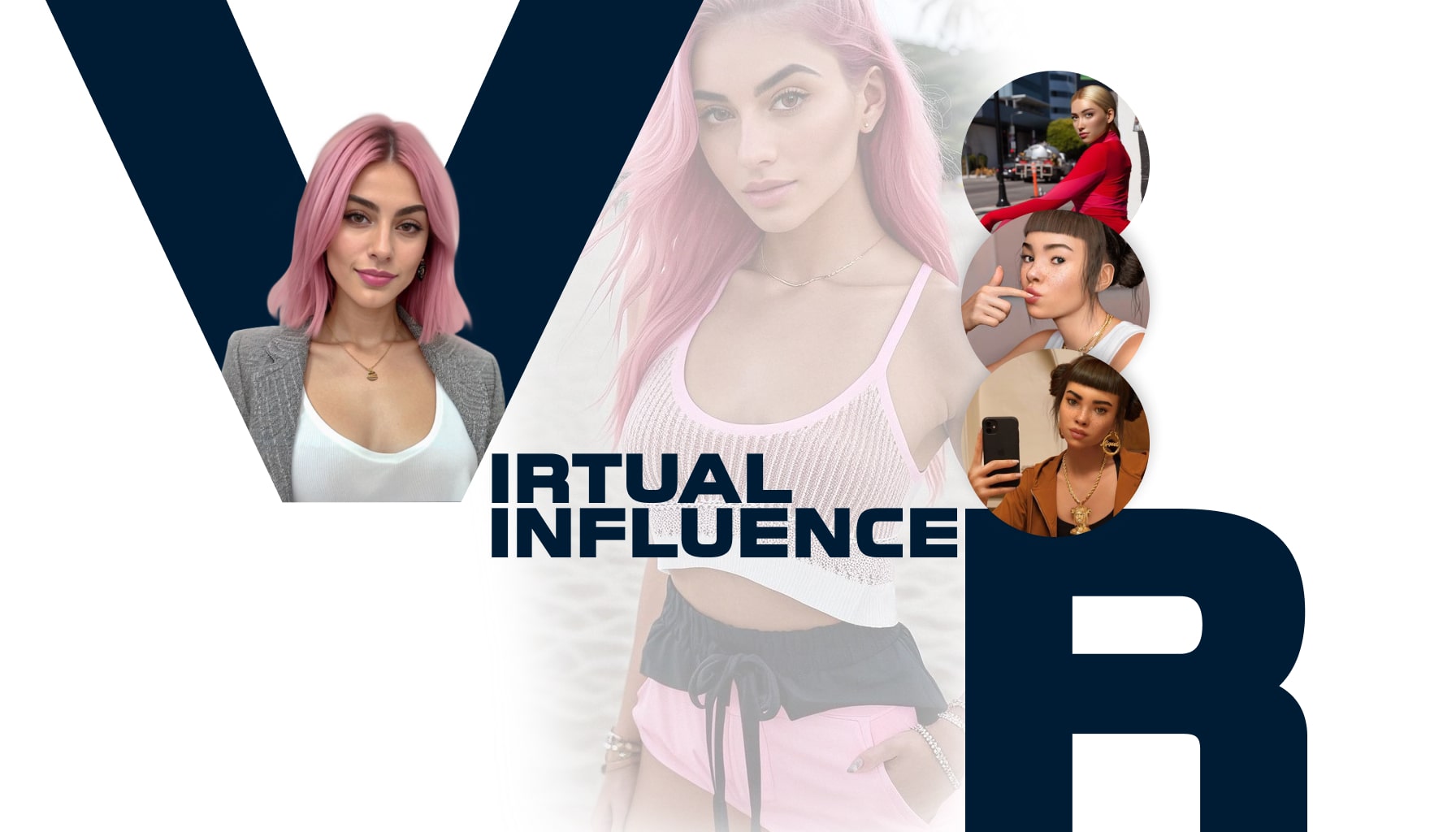
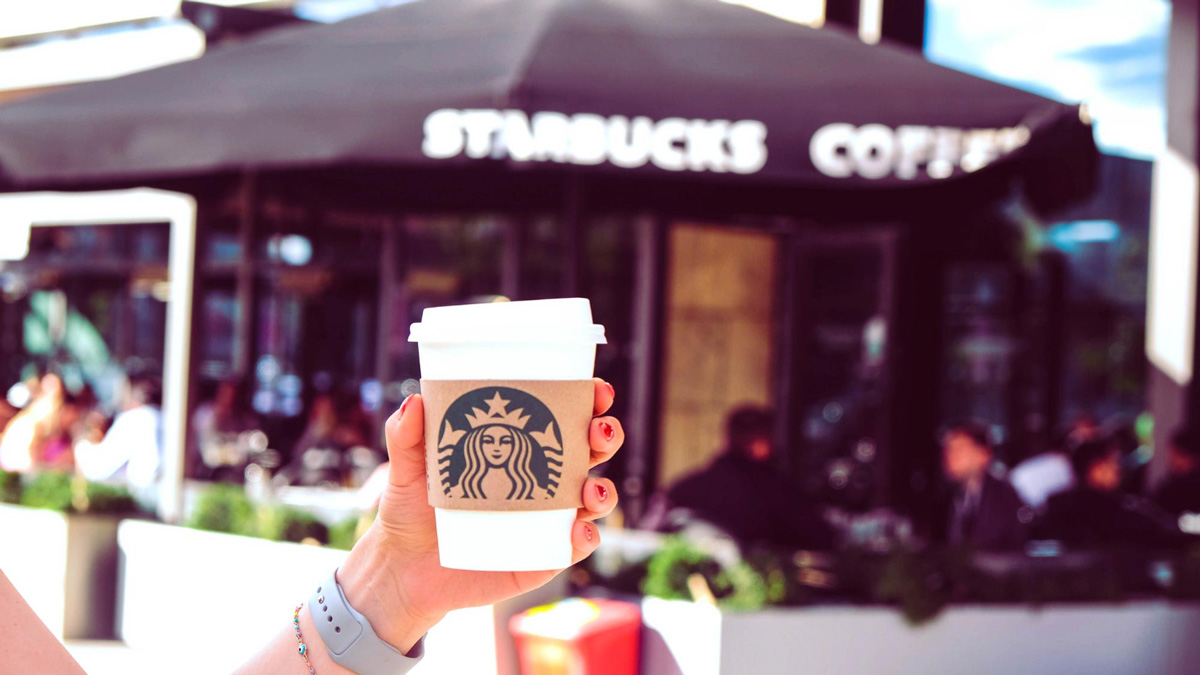


Visual storytelling is the art of conveying a narrative primarily through images, videos, graphics, or diagrams showing in place of telling. It quickly engages emotions, makes complex ideas instantly understandable, and encourages deeper retention and connection with the audience.